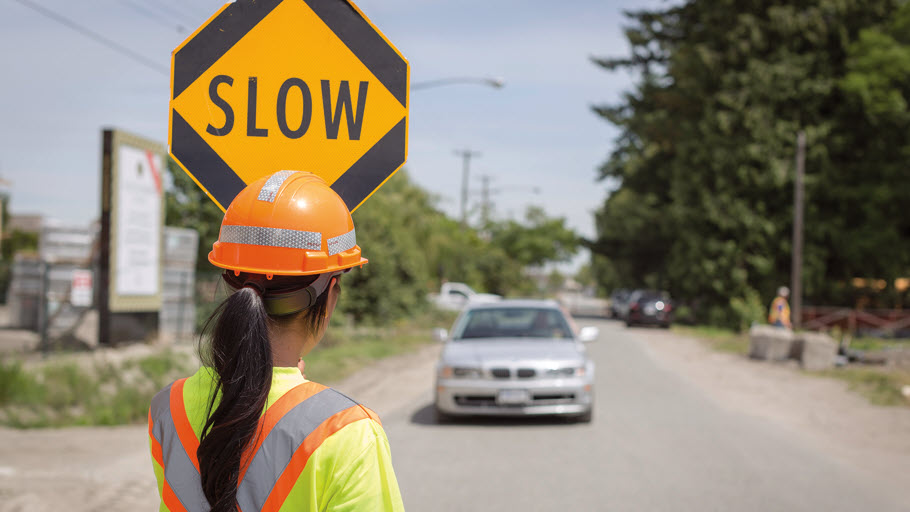Staying safe while working roadside
If you work close to traffic — whether for a few minutes or for hours every day — you have a dangerous job. In fact, 12 roadside workers were killed and 221 were injured by vehicles in the last decade in B.C.
By Susan Kerschbaumer
Staying safe in this hazardous environment, says Trace Acres of the Cone Zone campaign, requires the commitment of everyone involved: from employers, who set the stage for a secure working environment, to employees, who need to do everything they can to keep themselves and their co-workers out of harm’s way.
Whether you work in construction or do any number of other jobs that put you roadside, here are five things you can do to stay safe:
1. Be prepared.
“Safety starts before the work does,” says Acres. That means having the proper training, knowing safety procedures, understanding the hazards, and reviewing the work zone layout and traffic control plan — all before heading to the site. Be sure you know how to correctly place traffic warning signs and automated flagging assistance devices (AFADs). Stock your vehicle with any traffic control items you might need such as traffic cones and high-visibility vests.
2. Put your know-how to use.
Once you’re at the jobsite, put all that planning into action. Follow safe work procedures, wear that high‑visibility vest, and work facing traffic whenever possible. Be especially careful when setting up and taking down the work zone — typically one of the most dangerous parts of a roadside job. Face traffic as you set up, and place traffic control devices in the order that drivers will encounter them. Once the zone is in place, travel through it to ensure that signs, cones, and automated flagging devices are clearly visible and will make sense to motorists. When it’s time to dismantle the work zone, remove items in the reverse order that you set them up.
3. Stay aware.
Keeping safe while working roadside requires constant focus on what’s going on around you. This means being aware of vehicles driving by the site, as well as of trucks and mobile equipment working on the site. Listen for horns and back-up alarms, and make eye contact before walking in front of, beside, or behind vehicles.
Remember, too, that things can change throughout the day. Shifts in weather, for example, can mean decreased visibility or blown-over cones or signs. Stay safe by checking regularly to make sure signs are still in place and AFADs are functioning as they should.
4. Focus on others’ safety, as well as your own.
Everyone on site — especially truck, crane, and other mobile equipment operators — needs to watch out for all other workers on site. To minimize distractions, “put your phone in the glove box,” Acres urges, “or turn it off before entering the work zone.”
5. Speak up.
If you’re uncertain about a task, be sure to ask questions. If you see anything hazardous that you aren’t able to fix (e.g., blown-over cones or signs), report it to your supervisor. And if you feel your concerns aren’t being addressed, remember that you have the right to refuse unsafe work.
For more information
Find related resources on our Working in and around traffic webpage. For additional tips and checklists, visit conezonebc.com.
This information originally appeared in the Spring 2023 issue of WorkSafe Magazine. To read more or to subscribe, visit WorkSafe Magazine.

